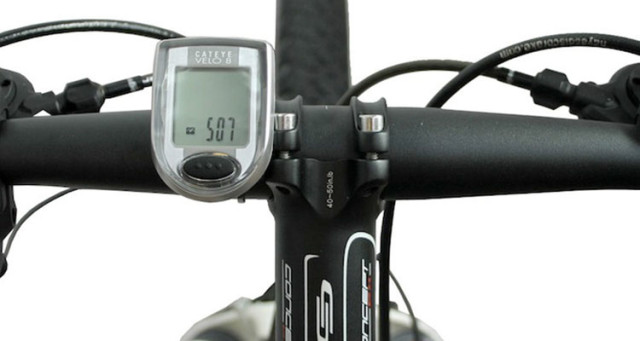The Cycle Computer is an electronic instrument that should be applied to the racing bike or mountain bike. By means of a sensor mounted generally on the front-wheel fork and a magnet mounted on a radius, can make a series of measurements and communicate to the cyclist a certain amount of useful data during and after the trip.
The quantity and quality of the information provided vary according to the bike computer models. Cheaper ones provide little information, but on the other hand, are sold at very low prices. Commercially, we can divide the cycle computer into three broad categories :
- With Wire.
- Wireless.
- With GPS.
Generally, the corded models are the cheapest and those with GPS are the most expensive. The differences between the different levels of Cycle Computer certainly not limited to the presence or absence of the connecting cables or the ability to use the data provided by the satellite tracking.
Quantity and quality of the information provided, the possibility of reviewing the output data from the computer, data storage capacity, ability to leverage the map data, robustness, and ease mounting solutions, complete accessories and more are the key elements that make the difference between a bike computer ideal for your needs and a device that can instead be spending a little careful, though perhaps contained.
Cycle Computer with Wire.
As said, the corded models are generally the cheapest ones, but also those with a lesser amount of options. You can go from basic solutions, able to detect only the speed, distance, partial and total, together with the clock (are substantially of the odometer evolved), to other more complete, which may also provide values of instantaneous speed, average and maximum values differentiated relative to distances traveled and relative values altimetry. In any case, with the same technical characteristics, a wireless model keeps us from having to move the cable to connect the device positioned on the handlebar to its sensors.
Wireless Bike computers and GPS.
More expensive than cordless models, the wireless cycle computers are the top of the range for this kind of devices. The top models of the major manufacturers are the type of access and are intended for those who wish to exploit the full potential of this tool.
The fundamental difference between a wireless bike computer and a wireless GPS with GPS is that the data is detected by the satellite receiver, not by the sensor on the bicycle wheel. On the one hand, the absence of sensor can simplify the instrument, from another, there may be inaccuracies in the reporting of data caused by the GPS system itself.
What are the data collected from the cycle computer?
The cycle computer with wire and wireless models the data provided by the sensor and magnet is usually placed on the front wheel. The pair of electromagnetic devices transmits impulses to the bike computer mounted on the handlebars, taking into account the extent of the wheel and based on the internal clock, processes the data and displays the parameters, according to the options available on each model.
The cycle computer with GPS performs calculations based on satellite detection, so you do not have sensors on the bike. The cycle computer can detect and provide much different data, depending on the model. The data may relate to the bicycle, the altitude, but also the rider (such as pulse and cadence). Let us look at some of the data that can be provided by the functions of cycle computer :
- Current speed, average speed of the bike.
- Daily distance traveled and total distance.
- Duration of the race.
- Comparison between current speed and average speed.
- Stopwatch. altimeter, with various functions.
- Average and maximum uphill climb.
- Outside temperature.
- Information related to heart rate.
- Information about the calorie consumption.
- Information relating to the cadence.
Some of the features listed to require the use of devices such as heart-rate monitors or potentiometers. Some models have the option of adding accessories compatible and in other cases, you will have to check the compatibility between the various devices before purchasing.
Finally, to decide to buy the model are also taken into account the level of assistance provided by the manufacturer through its website, the ease with which you can read the display (some models have color displays), the comfort of the control buttons (you can be used easily even in the winter with gloves?), the ability to link the cycle computer with a smartphone and load the maps for the routes.











